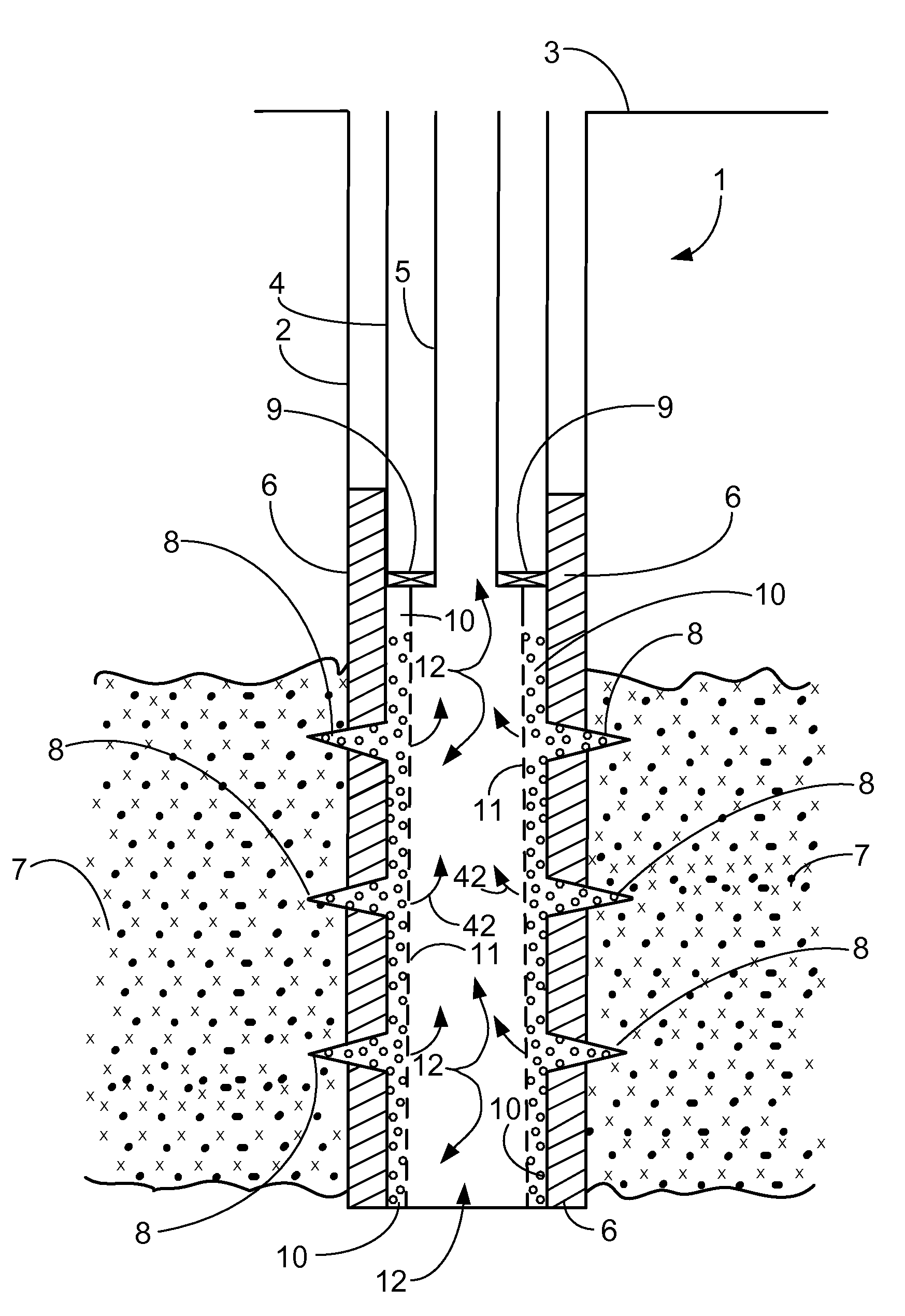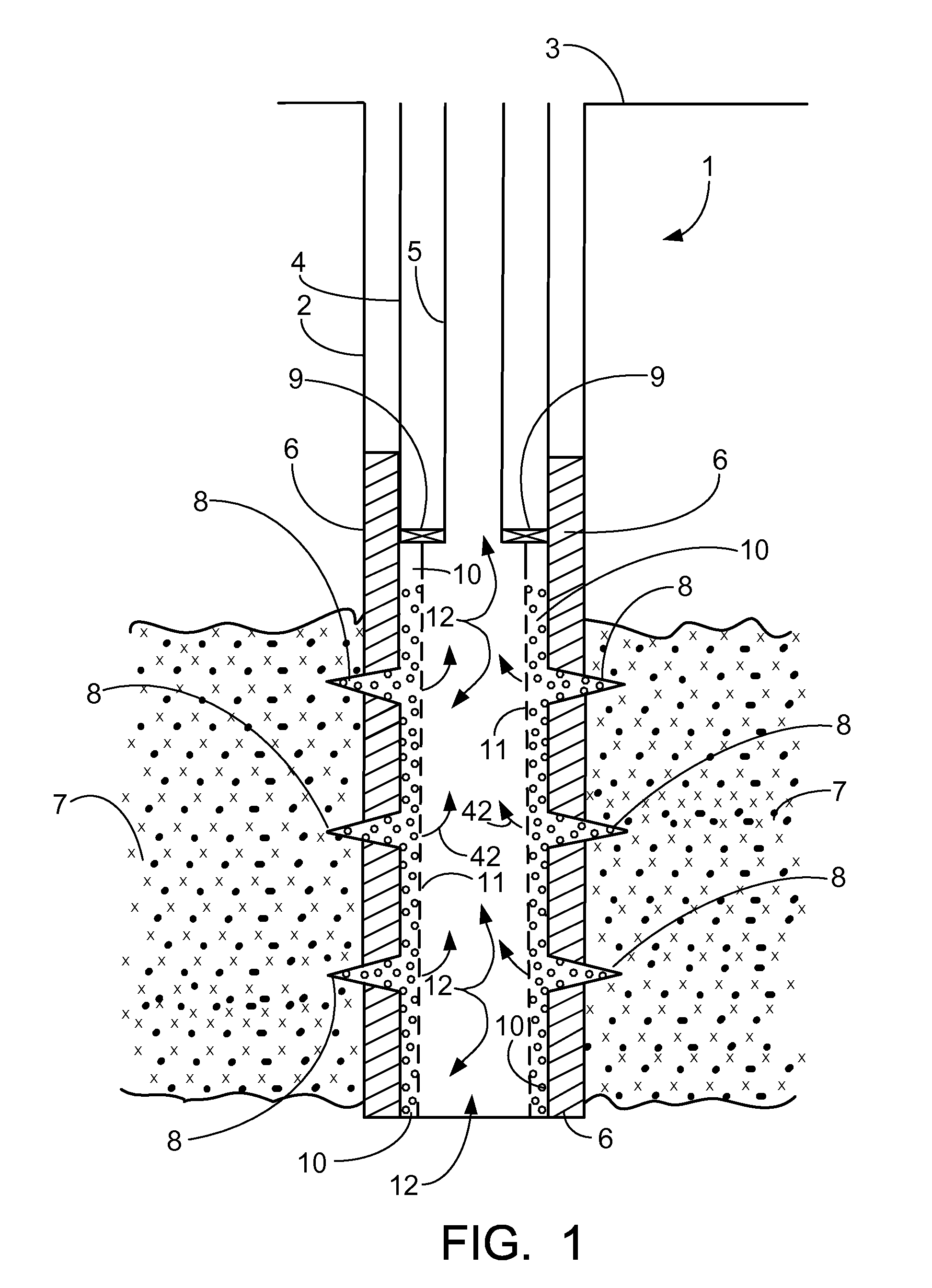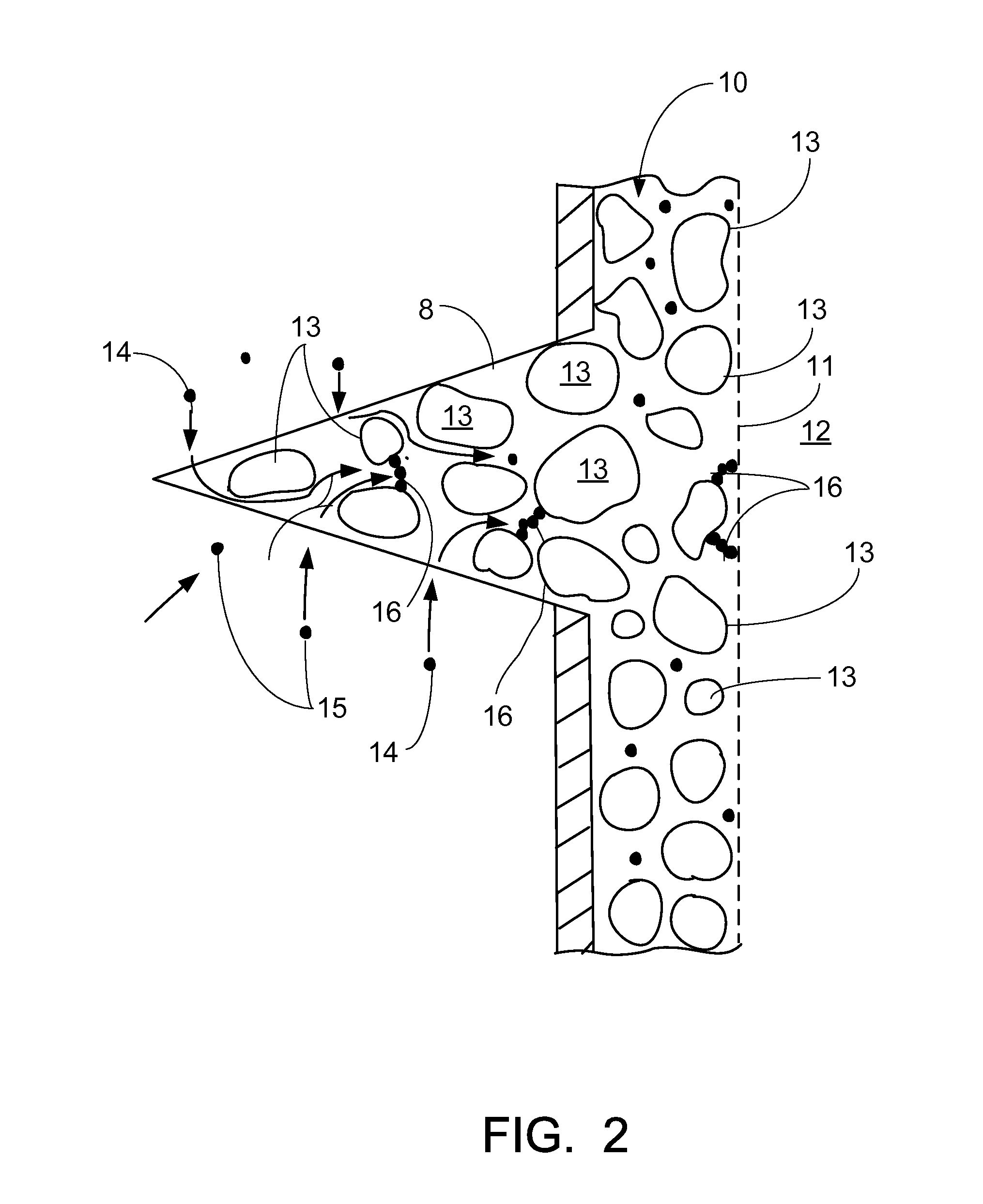Method of improving hydrocarbon production from a gravel packed oil and gas well
a technology of hydrocarbon production and gravel, which is applied in the direction of fluid removal, borehole/well accessories, chemistry apparatus and processes, etc., can solve the problems of affecting the permeability of the formation, and affecting the production rate, so as to increase the conductivity of the gravel pack and the resulting productivity of the oil reservoir
- Summary
- Abstract
- Description
- Claims
- Application Information
AI Technical Summary
Benefits of technology
Problems solved by technology
Method used
Image
Examples
Embodiment Construction
[0053]FIG. 1 shows a typical well that has been completed using a gravel pack. In FIG. 1, the oil and gas well 1 provides a borehole 2 that extends downwardly from the earth's surface 3. Casing 4 can be used to line the well borehole 2 as shown in FIG. 1. A production tubing 5 extends internally of the casing 4 in a manner that is known in the art. The production tubing 5 extends downwardly to a position next to a producing formation 7. A cemented annulus 6 can be formed in between producing formation 7 and casing 4. Production packer 9 is placed in between production tubing 5 and casing 4 above the producing formation 7.
[0054]A plurality of perforations 8 extend through cemented annulus 6 and communicate with the producing formation 7. Gravel pack 10 is placed in between screen 11 and cemented annulus 6. Oil and gas that is produced from well 1 flows from producing formation 7 through perforations 8, then through gravel pack 10 and screen 11 to well bore 12. Arrows 42 in FIG. 1 sch...
PUM
 Login to View More
Login to View More Abstract
Description
Claims
Application Information
 Login to View More
Login to View More - R&D
- Intellectual Property
- Life Sciences
- Materials
- Tech Scout
- Unparalleled Data Quality
- Higher Quality Content
- 60% Fewer Hallucinations
Browse by: Latest US Patents, China's latest patents, Technical Efficacy Thesaurus, Application Domain, Technology Topic, Popular Technical Reports.
© 2025 PatSnap. All rights reserved.Legal|Privacy policy|Modern Slavery Act Transparency Statement|Sitemap|About US| Contact US: help@patsnap.com



